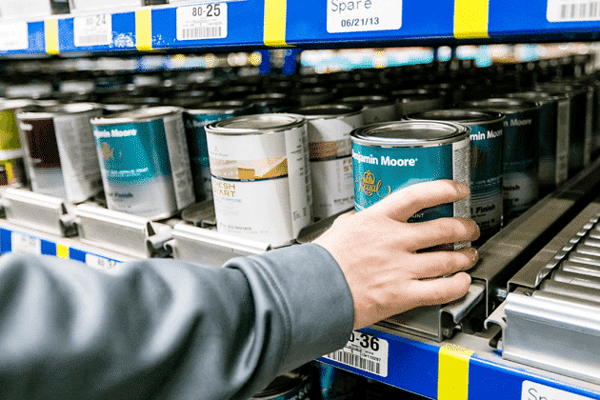
With greater volumes of e-commerce orders generated with smaller quantities of items, order picking operation costs are on the rise. A variety of picking methods are used to fulfill customer orders. Whichever method is chosen typically depends of the type of products picked, amount of items in an order, travel time and distance required for fulfillment and availability of picking labor.
This is a simple method of a single order picker picking items for a single order. Pickers select each item according to their pick list and place it in a container for shipping to the customer. This method is appropriate for odd-sized or oversized products; even items that may require special handling. Pickers walk many steps a day to pick this type of orders. Picking rates depend on the size of the orders and the amount of travel time.
Order pickers are assigned to one specific zone to pick within, filling orders with the SKUs located in that area. If the order requires SKUs from another zone, the container is passed to another zone picker(s) for completion. The advantage of this method of picking is that workers are very familiar with items in their zones, which are of a limited size, allowing them to pick faster. Products are typically stored in flow racks or shelving.
Also known as multi-order picking, this method is characterized by combining product demand from multiple orders into one pick instruction. Orders are arranged in efficient picking sequences. After order picking, goods are sorted/consolidated by order or shipping destination. Batch picking is useful for small items and only a few SKUs per order. It is most commonly used for food, non-food, apparel and ecommerce orders.
One SKU is picked to multiple orders or multiple SKUs to one order to a single picker. Pickers select items for multiple orders at one time, placing them into totes or containers, typically located on top of a mobile cart. Often technology like pick-to-light or pick-to-voice solutions guide pickers to the right products, speeding fulfillment and improving accuracy. Pickers pick orders in their entirety before proceeding to pick the next cluster of orders.
One picker picks one order, one SKU at a time, but orders are scheduled to be picked at certain times of the day, in a specific wave to maximize the picking and packing operations. Wave picking is used when there are a large number of SKUs to pick from. A WMS releases the waves to the warehouse sequentially throughout the day, to allow managers to coordinate parallel and sequential activities such as planned departure times of shipping vehicles or production schedules.
The method combines zone and batch picking where the picker is assigned a zone but can also be directed to batch pick within this zone. Multiple pickers can each pick portions of multiple orders.
Zone-Wave Picking is a combination of methods in that pickers are assigned a zone and each picker within their zone picks all of the SKUs for all orders that are stocked in their zone, one order at a time with one scheduling window per shift.
This type of picking combines all three methods: zone, batch and wave. Each picker is assigned a zone and picks all SKUs for orders stocked in the assigned zone. Additionally, the picker picks more than one SKU at a time and there are multiple scheduling windows per shift.
The goal of any picking process is to reduce the number of touches per item; ideally it should be one touch. Improving efficiencies within the order picking process leads to customer satisfaction and bottom line profitability.